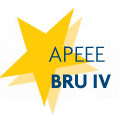In conclusion, expectations seem to be high regarding the consumption of fresh, seasonal products, made from quality products cooked on the spot.
Although the initiatives carried out around taste education, limiting waste and adopting eco-responsible behaviour are understood and generally encouraged, numerous remarks from both parents and pupils show that these approaches, although admirable, sometimes miss their target and can even be perceived as counter-productive. Some children, not adhering to the approach or having very little attraction for the meals offered, refuse the food proposed in this way, which they consider to be either not of sufficiently good quality, or too sophisticated or badly prepared (cooking, accompaniment, reheating, seasoning).
In short, it appears that the APEEE-Canteen Service needs to work on the nature and quality of the meals (i.e. more diversity and simplicity) in order to achieve the nutritional objectives without, however, neglecting the pleasure aspect of the meals. The APEEE-Service Cantine must also, while taking into account the multicultural context of the school, improve its communication regarding the content of the meals offered and their preparation. Indeed, satisfaction surveys also show that unfortunately many preconceptions and misconceptions govern the food choices of the school’s pupils. It is also the mission of the Canteen to provide the most accurate information possible on the food offered to its users.
In order to achieve this two-fold objective, the APEEE-Canteen Service has initiated a series of changes in the management of the Canteen and the different services under its responsibility during the school year 2021-2022. This includes in particular:
* a complete revision of the hot meal menus of the canteen, in collaboration with a nutritionist and the Belgian national standards. They now offer more diversity in the menus. Particular emphasis has been placed on seasonal and short-distance products. Wherever possible, organic or vegan products are also promoted.
* The alternative offer to the traditional canteen and hot meals for lunch (i.e. cafeteria and Snack Shack) has been reviewed and new products are continuously proposed in order to offer a wider choice while maintaining the ambitious objective of proposing as much healthy and tasty food as possible.
*A discussion has been initiated and actions have been put in place to avoid stock-outs during lunch hours and food waste (i.e. reinforcement of pre-orders and depending on the availability of Chef’s Boxes with cold buffet items from the teachers’ restaurant).
* better communication about the services under the responsibility of the APEEE-Canteen Service. The website, which is currently being reviewed, will include more complete information on the different options available to pupils for lunch. It is also planned, in collaboration with a nutritionist and the Belgian national standards, to integrate educational content on nutrition.
* Intense work is done with suppliers every day to obtain the best products at the best prices. This exercise is even more delicate and important given the period of high monetary inflation that we are currently experiencing.

